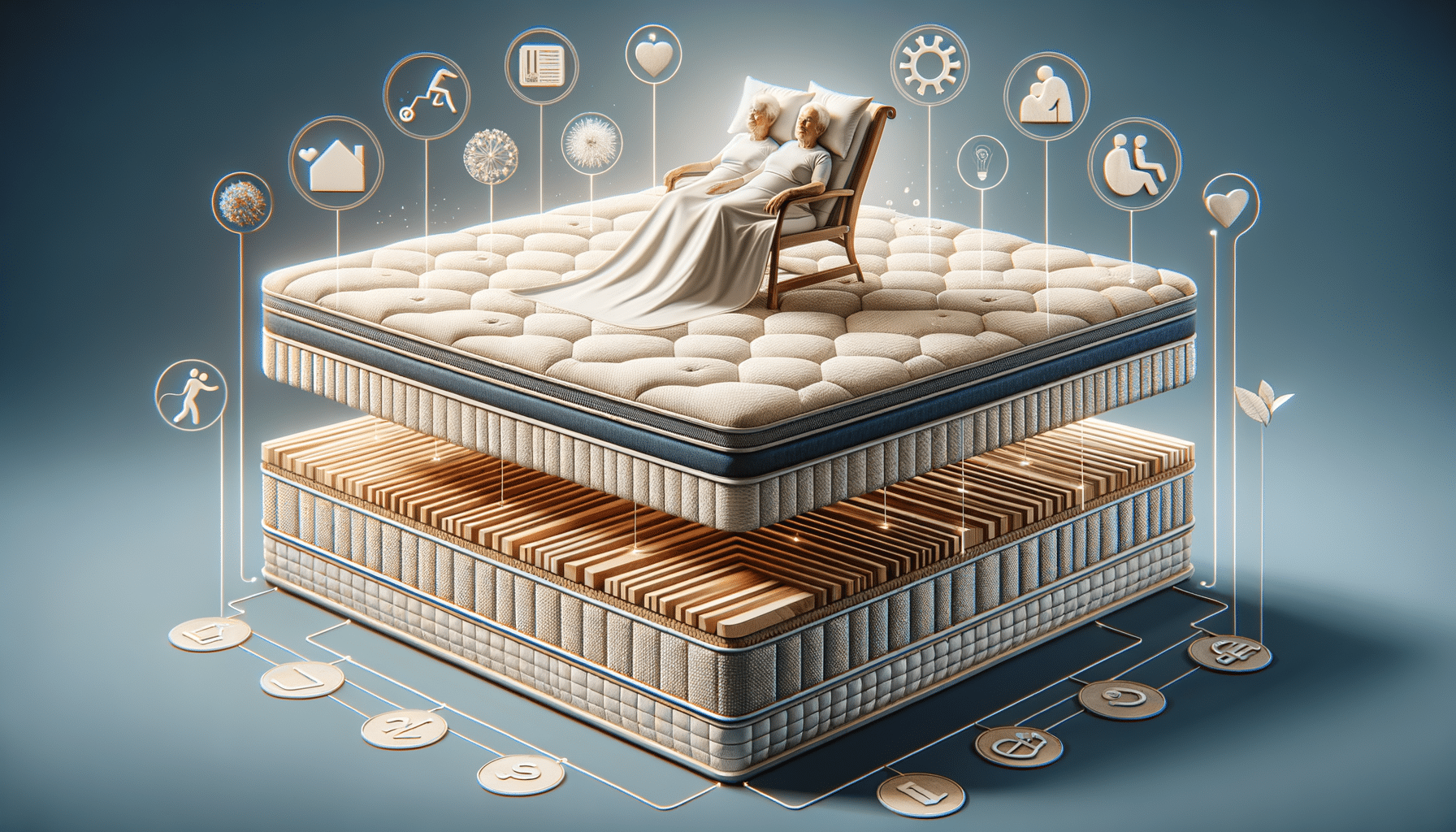The Importance of a Suitable Mattress for Seniors
A good night’s sleep is crucial for everyone, but it becomes increasingly important as we age. For seniors, the right mattress can significantly impact health and well-being. As the body ages, it undergoes various changes that affect sleep patterns and comfort. A mattress that offers appropriate support and comfort can help alleviate common issues such as joint pain, back problems, and poor circulation.
Seniors often face challenges like arthritis, osteoporosis, and reduced mobility, making it essential to choose a mattress that caters to these needs. A suitable mattress can provide relief by distributing body weight evenly and reducing pressure points. This not only enhances sleep quality but also contributes to overall health by promoting better posture and reducing the risk of bedsores.
Moreover, a mattress designed for seniors should be easy to get in and out of, minimizing the risk of falls. Features like edge support and adjustable bases can be particularly beneficial. By focusing on these aspects, seniors can enjoy a restful sleep, leading to improved mood, energy levels, and cognitive function.
Key Features to Consider in a Senior Mattress
When selecting a mattress for seniors, several key features should be considered to ensure it meets their specific needs. These features include firmness, material, support, and temperature regulation.
- Firmness: The ideal firmness varies depending on personal preference and health conditions. Generally, a medium-firm mattress is recommended as it provides a balance of support and comfort.
- Material: Memory foam and latex are popular choices for seniors due to their ability to conform to the body’s contours, offering pressure relief. Latex is also known for its durability and natural resistance to dust mites and mold.
- Support: Proper support is crucial to maintain spinal alignment and reduce pain. Mattresses with zoned support can offer targeted relief to different areas of the body.
- Temperature Regulation: Seniors may experience temperature fluctuations during sleep. Mattresses with cooling technologies, such as gel-infused foam or breathable covers, can help maintain a comfortable sleep environment.
By focusing on these features, seniors can find a mattress that not only addresses their physical needs but also enhances their overall sleep experience.
Comparing Mattress Types for Seniors
Understanding the different types of mattresses available can help seniors make an informed decision. The most common types include innerspring, memory foam, latex, and hybrid mattresses.
Innerspring Mattresses: These traditional mattresses use coils for support and are known for their durability and affordability. However, they may not offer the same level of contouring and pressure relief as other types.
Memory Foam Mattresses: Known for their contouring abilities, memory foam mattresses provide excellent pressure relief and support. They are ideal for seniors with joint pain or arthritis. However, they may retain heat, so look for models with cooling features.
Latex Mattresses: Latex offers a supportive and resilient sleep surface. It is naturally hypoallergenic and provides a cooler sleep environment. Latex mattresses are suitable for seniors who prefer a more bouncy feel.
Hybrid Mattresses: Combining the benefits of innerspring and foam, hybrid mattresses offer support and comfort. They are a versatile option for seniors looking for a balance of features.
Each mattress type has its pros and cons, and the choice ultimately depends on individual preferences and health needs.
Tips for Maintaining a Senior Mattress
Once a suitable mattress is chosen, maintaining it properly can extend its lifespan and ensure it continues to provide the necessary support and comfort. Here are some tips for mattress maintenance:
- Regular Rotation: Rotate the mattress every three to six months to prevent uneven wear and sagging.
- Use a Mattress Protector: A waterproof and breathable mattress protector can guard against spills, stains, and allergens.
- Keep It Clean: Regularly vacuum the mattress to remove dust and allergens. Spot clean any stains with mild detergent and water.
- Avoid Jumping: Excessive force can damage the mattress structure, so avoid jumping or placing heavy objects on it.
By following these maintenance tips, seniors can ensure their mattress remains in good condition, providing comfort and support for years to come.
Conclusion: Choosing the Right Mattress for Seniors
Choosing the right mattress for seniors involves careful consideration of various factors such as support, comfort, and specific health needs. By understanding the importance of a suitable mattress and evaluating key features, seniors can find an option that enhances their sleep quality and overall well-being.
With numerous mattress types available, it is essential to weigh the pros and cons of each to find the perfect fit. Additionally, maintaining the mattress with regular care can prolong its life and effectiveness.
Ultimately, investing in a quality mattress can lead to improved sleep, better health, and a higher quality of life for seniors. By prioritizing comfort and support, seniors can enjoy restful nights and rejuvenated days.




Leave a Reply